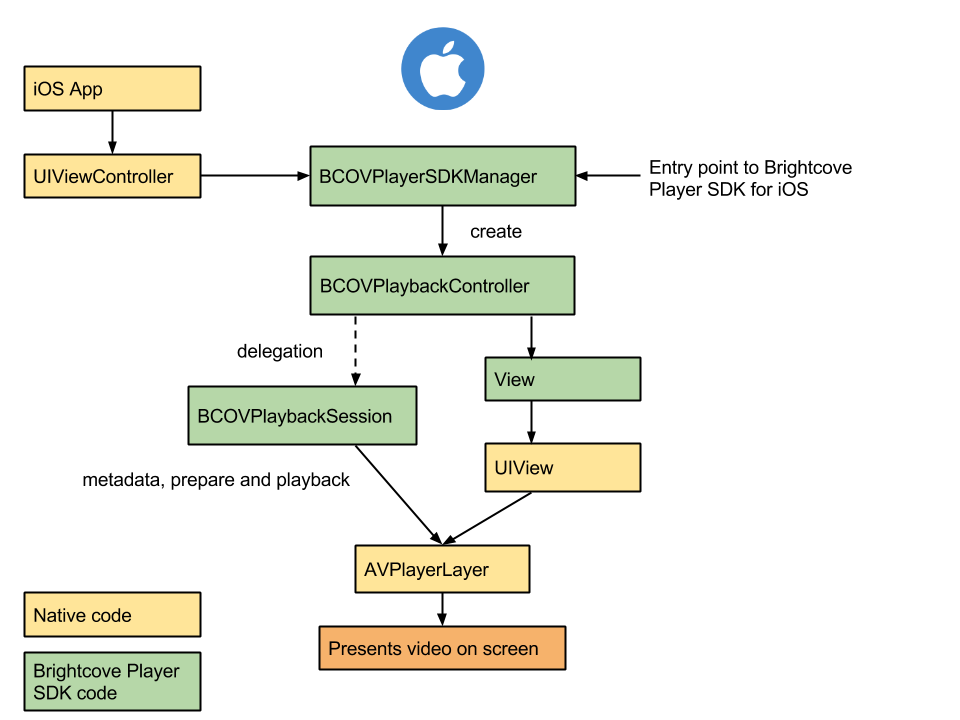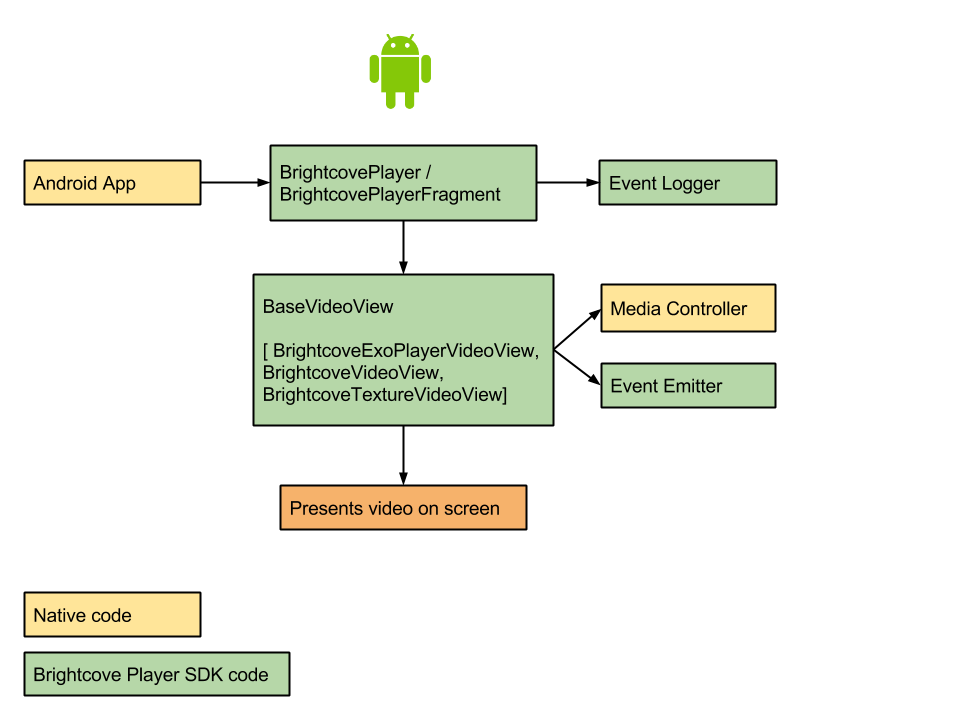In my most recent post, DRM: How to Protect Your Video Content, I concluded with a promise to cover more online video security topics. After deeper thought, I decided to cover how the Brightcove software development kits (SDKs) can be used to easily render your videos in a mobile app. Perhaps I was inspired by my day-to-day work, as I often receive questions from clients and prospects wanting to understand how they can use Brightcove to show videos in their mobile applications. As a sales engineer, I frequently discuss the different ways videos can be shown in a mobile application using our tools. In this post, I will concentrate on sharing key information so you can confidently move forward in your SDK journey. If you are interested, I have included some articles that focus on the pros and cons of Webview and Native apps in the reading material section, below. Now, let’s get started.
Brightcove SDKs are built on top of the native player framework. This means you can take advantage of the performance and speed of the native OS and create really compelling video experiences in your apps. Beyond adding video simply and easily for your audiences, our native SDKs enable you to manipulate the player to accomplish the advanced features you require, integrating into tools for security, monetization, and performance analysis.
The SDKs follow established conventions in naming standards, memory management, and design patterns in order to make getting started as simple as possible. Brightcove maintains SDKs for iOS, TvOS, and Android platforms while our mobile team updates the SDKs on the regular basis. Beyond maintaining these resources, Brightcove has extended our native player frameworks to handle key integrations for digital rights management (DRM) and advertising. For our SDKs, simplicity is key. Each feature released is designed to be integrated with the least lines of code.
Getting Started: How to Add Video to Your App
Depending on the platform you want to develop a mobile video app for, you will need to acquire the necessary prerequisites such as Xcode for iOS/TvOS or Android Studio for Android. Visit the Brightcove Native Player SDKs Resource Center to find instructions broken down by platform, IOS, TvOS, Android.
Brightcove Player SDK for iOS Overview: some of the components in the Native SDK for iOS and how they relate to each other.
In this resource center, you’ll find general overview information for each platform, the location of the SDK, a step-by-step guide to building your first video app, and additional material on plugins for the SDK. But that’s just scratching the surface; there are even sample apps which can be downloaded and used as a playground.
Brightcove Player SDK for Android Overview: some of the components in the Native SDK for Android and how they relate to each other.
Ready to get started and integrate video into your app quickly and seamlessly? Great! As you peruse the resource center, I’ll leave you with some notes from my desk. Working with hundreds of Brightcove customers, I’ve seen it all. Here are some of my top-of-mind tactics for SDK implementation.
Testing and Troubleshooting Strategies
- If there is an issue with playback, I will use a software proxy like Charles Proxy to look at the network traffic. That way, I can see the request, its parameters, and the response.
- The Android market is more diverse than the iOS market in terms of devices. Brightcove maintains a device lab, and we have multiple Android devices which represent the most popular devices running different Android OS versions.
- When I develop/debug an Android app, I make judicious use of logging and events.
- Interested in using a plugin? Review all documentation, and the notes sprinkled therein. For example, when I first started working with the SDKs, I was trying to get a DRM stream to appear on Android, but it kept failing. After looking the usual suspects, I found the cause-- DRM would not work in the emulator! Moral of the story? Had I looked at the doc carefully, I would have saved myself a lot of time. Avoid the tendency to skim.
- Lastly, Brightcove offers and maintains a Developer Forum. Request to join, and then subscribe! As a subscriber to the Brightcove Native Player SDKs forum, you can review current questions, search through the archive, contribute answers, and of course, pose your questions.
Reading Material
What is the Difference Between an API and an SDK?
Video Playback Implementations: WebView, Native Player and Brightcove Native Player SDKs
Native, Web or Hybrid Apps? What’s The Difference?
Native Apps vs. Web Apps – What is the Better Choice?
Get a Video Platform for Both Marketing & IT




